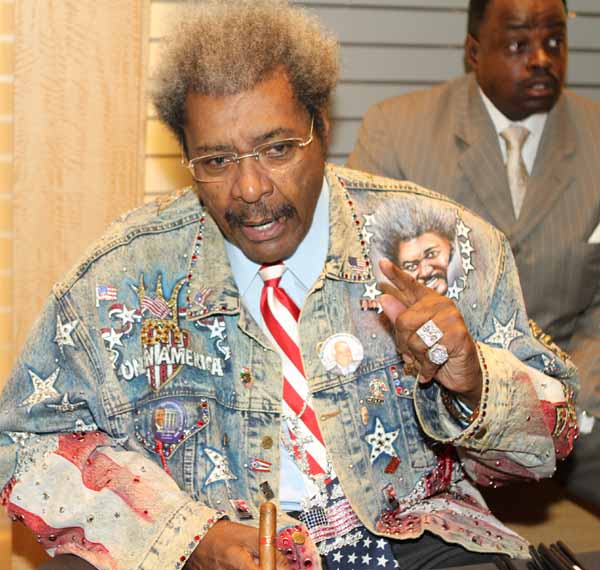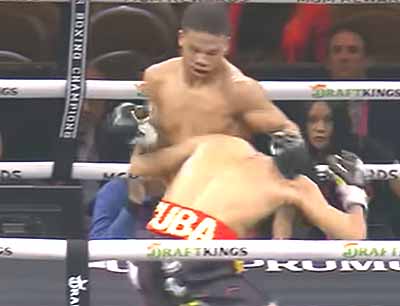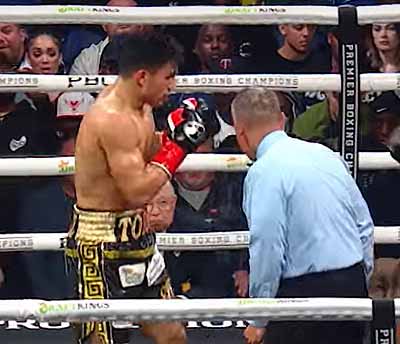He began life eighty three years ago this month, May 3, as Walker Smith Jr in the small town of Ailey,Georgia. His birthplace was one, maybe the only, of the small town elements about the man who was known throughout his career as “Sugar Ray”. He lived large outside the ring and inside the ropes he was the largest presence of his, or possibly, any other generation of fighters. There have been other boxers who have appropriated the sobriquet “Sugar Ray” throughout the years, some who have even carried the proud name into the ring with a modicum of distinction. However, to most knowledgeable boxing fans, “Sugar Ray” goes with Robinson the way “Babe” goes with Ruth.
He had nearly 200 bouts in his career and won 173 of them, 109 by knockout, but these are only the unrefined statistics of Sugar Ray’s time in the ring. Its the other elements of his record, the highlights of a boxing career like few others, that convey the true measure of Sugar Ray Robinson.
Sugar Ray came within a couple of rounds of becoming the second fighter, ever, to win three championships when he wilted in the Yankee Stadium heat trying to wrest the light heavy weight championship from Joey Maxim (please spare me bogus contentions about latter day fighters who have won multiple championships in an era of “alphabet titles” and “junior” weight divisions; the fact is that Henry Armstrong is the only three time champion in boxing).
Sugar Ray threw the best left hook ever in a boxing ring, knocking out Gene Fullmer, to regain the middleweight championship, in Chicago in 1957. Two days after the fight, the new champion turned 37 (bookend that left hook with Rocky Marciano’s thirteenth round right hand against Joe Walcott in their first fight and you have the two best punches ever thrown in the boxing ring).
In 1951, at the peak of his career, Sugar Ray, within the space of two months lost and won back the middleweight championship in two brutal, wonderful matches with Randy Turpin who may have been the toughest fighter ever to come out of England (if one disputes this contention, it is only necessary to watch a film of Turpin fighting Bobo Olson in 1953 in Madison Square Garden and after you’re done shuddering at the sheer ferocity of those fifteen rounds, any such doubt should be erased). Turpin beat Robinson in London when Robinson, on one of his frequent European tours, was fighting his seventh bout in less than two months. Two months following the London bout, in the Polo Grounds in New York, Robinson, trailing on all scorecards, caught Turpin on the ropes in the tenth round, and when he let him off, Turpin no longer had what Sugar Ray always considered “his crown”.
However, as great as Robinson’s career was, it was the way he went out that remains a tribute to his eminence as a fighter. Sugar Ray Robinson, to the end, continued to step into the ring with the best boxers available. Sure, he took some easy opponents during the early sixties, mostly in Europe, where, if the fans were given a vote, he would have been up for canonization. However, on the back end of his career, in his fortieth year, he fought Paul Pender, the middleweight champion and Gene Fullmer twice. At 41, he fought Denny Moyer, a tough as barb wire fighter, out of Portland Oregon, twice and followed that with bouts against Ralph Dupas and Joey Giardello (if you have to ask if these were tough guys, well, lets just say that there were a bunch of quality fighters, at that time, half Robinson’s age, who remained quality fighters by avoiding Moyer, Dupas and Giardello). This was a time, with but eight champions, when not all good fighters owned titles. Robinson went out fighting most of these guys.
His last fight, in November, 1965, was against another highly capable boxer, a slick New Yorker named Joey Archer. The fight was in Pittsburgh, which was on its last legs as a great fight town. The year before Archer had beaten Dick Tiger over ten rounds in Madison Square Garden, so this was no “walk in the park, pick up a payday” fight for Robinson. In the next year, Archer would go fifteen rounds, twice, with Emile Griffith for the middleweight title.
Archer clearly out boxed the forty-five year old Robinson over ten rounds, but the most shocking aspect of the fight was that in the eighth round Archer knocked Robinson down. Archer, while a great boxer, wasn’t a puncher of any description and that knockdown, as clear as any signpost, indicated that it was time for Sugar Ray to quit. In a very poignant scene in the dressing room, after the bout, Miles Davis, the musician, tears streaming down his face, told Robinson, in that famous gravelly voice, “Sugar, it’s time, man”. Robinson listened and retired the next day. That tableau was famously captured by Pete Hamill in eight hundred perfect words that comprised a column on the back page of the New York Post on April 13, 1989, the day after Robinson died.
I remember talking with Archer, after he retired, at a “bust out joint” he and his brother, Jimmy, ran on the upper East Side of New York. He recalled the Robinson bout with wide-eyed amazement, “the guy was forty five, for God’s sake. I kept thinking throughout the whole fight, what must he have been like in his prime. Hell, if they had matched with him when he was fighting LaMotta, Graziano and them, I woulda stood in the dressing room”. Joey Archer couldn’t punch real hard, but he was a straight thinker.
I’ve always thought “pound for pound” was a somewhat silly comparison of fighters of different size, mostly a lazy invention of sportswriters, akin to comparing fighters of different eras. To those who saw Robinson in the ring or on “live” television, his greatness is indisputable. To those who have heard of his exploits in the ring only on a “hearsay” basis, its difficult, if not impossible with mere words, to convey how good Sugar Ray was. Try this: think of the best fighter you’ve ever seen and then envision the composite of the boxer who would beat that fighter. Robinson is the guy you’re creating in your mind. I’ll make the case that Sugar Ray was in a class by himself. To those who dispute that, I offer this alternative: whatever class Sugar Ray Robinson was in, it certainly doesn’t take long to call the roll. Bernie McCoy



